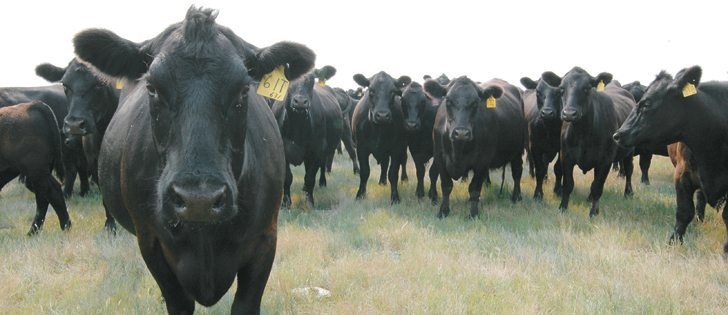Ranchers who have a history of raising quality cattle can demand higher prices from feedlots, says Canfax official
Discovering what packers are paying for cattle in the United States is extremely easy.
American meat processors are required by law to provide detailed price and sales data every day to the U.S. Department of Agriculture.
The USDA publishes the information online, where it’s publicly available in immense detail. The data can be overwhelming because the majority of cattle in the U.S. are now bought and sold under a complex grid system, where feedlots receive premiums for cattle that generate higher beef grades and yields.
Read Also

Beef check-off collection system aligns across the country
A single and aligned check-off collection system based on where producers live makes the system equal said Chad Ross, Saskatchewan Cattle Association chair.
“Seventy-four percent of fed cattle sold in the United States are on some kind of premium grid or some kind of grid system,” said Darrell Busby, livestock specialist with the Tri-County Carcass Futurity Cooperative, a group of farmers in Iowa who retain ownership of cattle until slaughter.
“(Grids) have really taken off in the last four years.”
Packers are willing to pay more for high quality beef because they can generate more profits from Prime and Choice beef. The grids are basically a table, where price varies according to a carcass’s quality grade and yield grade.
U.S. data shows that the price differences on a grid can be significant. Superior grading cattle can sell for 15 to 20 cents more per pound than cattle that produce poorer beef.
Canada’s cattle industry has also adopted formula-based pricing, but it’s not as transparent as the American model.
“Most of the big feedlots have some sort of grid,” said Brenna Grant, research services manager with Canfax.
“I would be comfortable saying greater than 50 percent of fed cattle sold in Alberta.”
However, grid prices in Canada aren’t public.
Canfax collects prices from cattle feedlots on formula and contract pricing, but the system is voluntary. Grant said cow-calf producers who want information about formula pricing can contact Canfax or talk with other ranchers.
“Because we don’t have that transparency in the Canadian market, it’s (about) talking with other producers and talking to the packers to see what kind of deals they’re offering.”
Larry Corah, vice-president with the Certified Angus Beef program, agreed Canadian premiums for beef grade remains in the shadows.
“Grids are more public and more common (in the U.S.),” he said.
“You can pick up websites and see what the grids are.”
The lack of information makes it more difficult, but some Canadian cow-calf producers have learned how to capture their share of the premiums.
Grant said ranchers can leverage a history of raising quality cattle to garner higher prices from feedlots.
“For the cow-calf guy, the biggest thing is developing … a reputation,” she said.
“We call these reputation herds and reputation sales…. The feedlots know those cattle are going to perform.”
Ryder Lee, Saskatchewan Cattlemen’s Association chief executive officer, said the issue of whether feedlots are passing on sufficient premiums to cow-calf operators is a source of tension in the trade.
He said cattle producers have to be proactive if they want to capture a piece of the premiums.
“Having a conversation with the people who are going to buy your cattle can never hurt,” he said.
Garnering premiums may re-quire a shift in thinking, he added.
“Am I selling my production or am I marketing it? There’s more involved in marketing.”
Grant said grid pricing is less common in Canada because price hedging is more complex. Futures markets are available to manage price risk, but Canadian feedlots also have to worry about the ex-change rate.
Nonetheless, markets are most efficient when information is readily available, and Canadian data on grid pricing is lacking compared to the U.S.
“We are a smaller industry, and producer confidentiality is important, but there is definitely a need to ensure that we continue to have price discovery and price transparency,” Grant said.
“So we get clear price signals through the supply chain to tell those cow-calf producers, and even the feedlots, what to produce more of and what to produce less of.”


















